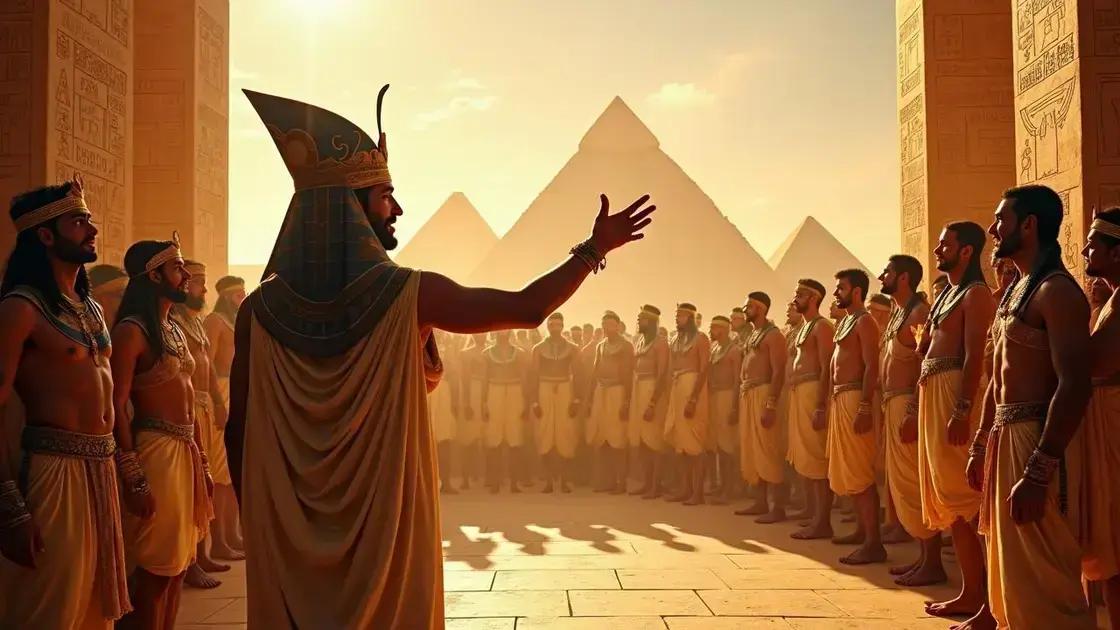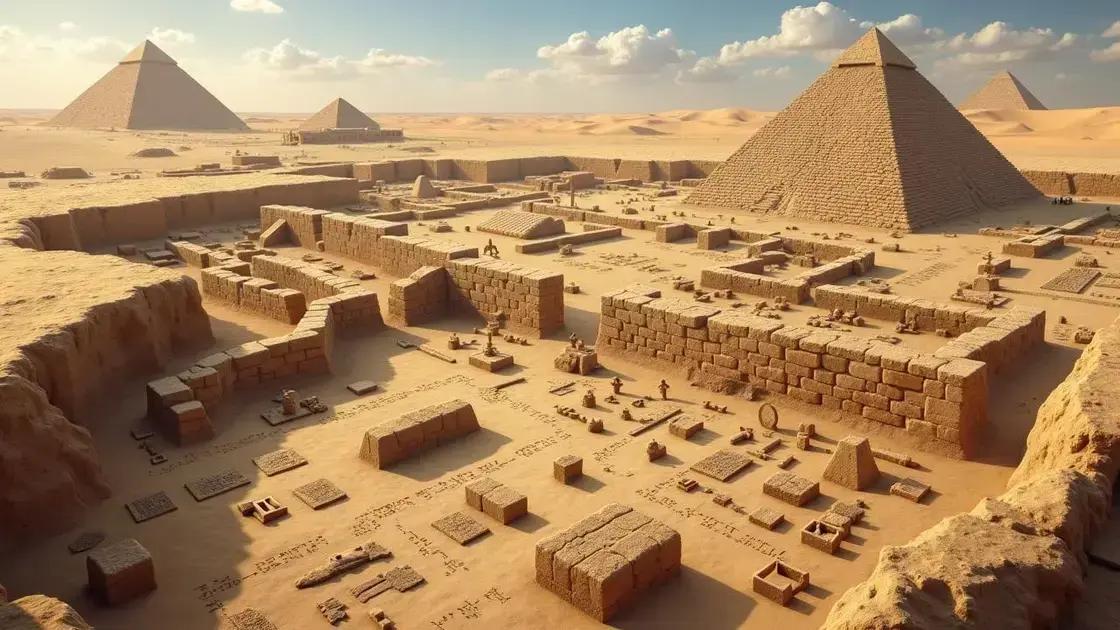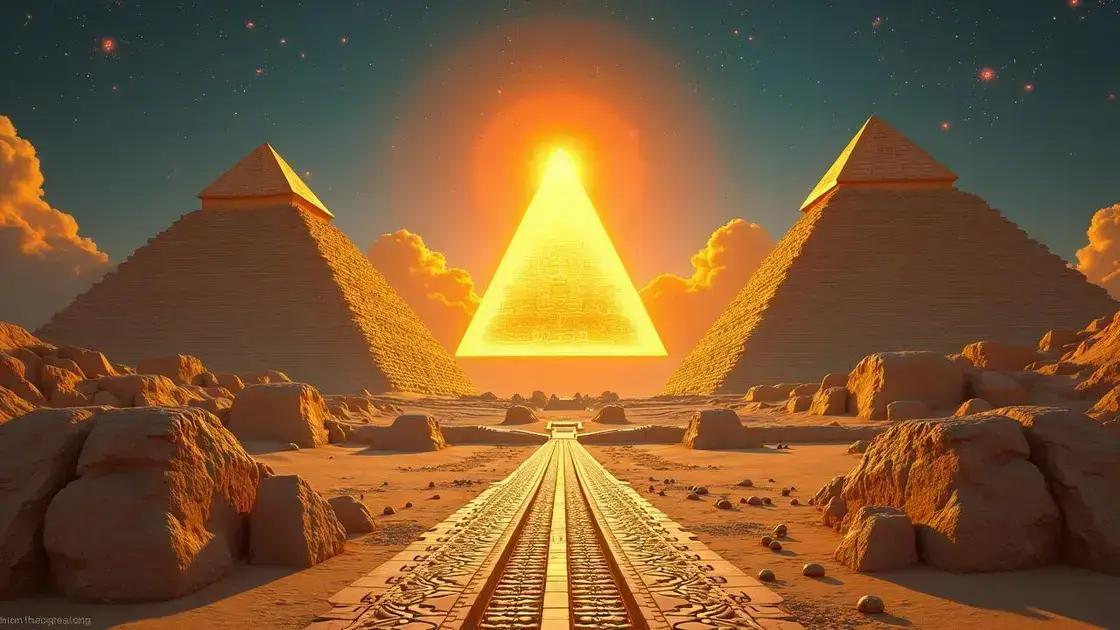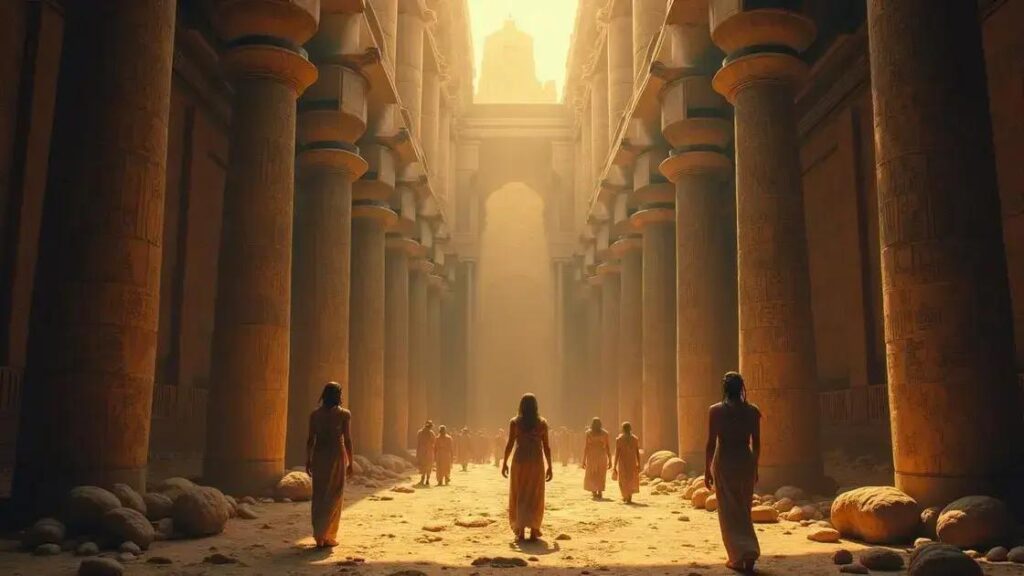The tricks of the Egyptian Pharaohs, often shrouded in myth, involve a blend of natural and synthetic methods, as evidenced by archaeological findings and ancient texts. These secrets, reflecting advanced engineering and cultural wisdom, continue to inspire modern interpretations and research, highlighting the Pharaohs’ legacy in art, architecture, and history.
Have you ever wondered if the trick of the Egyptian Pharaohs was natural or synthetic? This captivating question opens a door to ancient mysteries and fascinating discoveries that have intrigued scholars and enthusiasts alike. In ancient times, Pharaohs wielded immense power, often employing various techniques to captivate their subjects and rivals. Understanding whether these methods stemmed from nature or human ingenuity is essential to appreciating the rich history of Egypt. In this article, we will delve into the myth of the Pharaohs’ trick, differentiate between natural and synthetic, examine historical evidence, and explore the legacy of these mystical secrets.
The Myth of the Pharaohs’ Trick

The myth of the Pharaohs’ trick has fascinated people for centuries. Many ancient stories depict the Pharaohs using mystical powers or advanced knowledge to perform feats that seemed impossible. These legends often describe amazing feats of engineering, such as building the pyramids or creating illusions during grand ceremonies. But what if these stories have roots in both natural and synthetic methods?
Exploring Ancient Legends
According to ancient texts, Pharaohs could bring forth water from the ground or create a dazzling display of lights during nighttime rituals. Such acts added to their divine status. However, these legends often lack clear evidence. Archaeologists are left to uncover the reality behind such claims. Was it truly magic, or were there practical methods at play?
Understanding Cultural Context
In ancient Egypt, the Pharaohs ruled as both political and spiritual leaders. This dual role often led to myths that elevated their status. People believed the Pharaohs had direct communication with the gods, which added an air of mystique. These stories were vital to maintaining power, as they united the people under common beliefs.
Scientific Exploration of the Myths
Today, scientists and archaeologists are working hard to separate fact from fiction. They analyze ancient texts, conduct excavations, and use modern technology to understand how the Pharaohs accomplished these tasks. For instance, some researchers believe that simple machines like ramps and levers enabled the construction of massive monuments. Others suggest that natural resources, such as the Nile, played a significant role.
By examining these myths, we can gain insights into the cultural and technological advances of ancient Egypt. Understanding the truth behind the Pharaohs’ tricks helps us appreciate our shared history and inspires us to explore further.
Natural vs. Synthetic: Understanding the Difference

Understanding the difference between natural and synthetic methods is crucial to analyzing the tricks of the Egyptian Pharaohs. Natural methods rely on resources and processes that exist in nature, while synthetic methods involve human intervention and the creation of new materials or techniques.
Defining Natural Methods
Natural methods are often derived from plants, minerals, and other organisms. For example, ancient Egyptians used natural dyes from plants and minerals for art and decoration. These methods relied heavily on environmental resources and local materials, which were abundant in the Nile Valley.
Exploring Synthetic Techniques
Synthetic techniques, on the other hand, refer to human-created solutions. An example is the development of mortar or sealants used in construction, which may have included materials like gypsum or lime. These substances allowed for more durable structures, showcasing the ingenuity of the Egyptians in engineering.
Usage in the Tricks of the Pharaohs
The tricks attributed to the Pharaohs could involve both natural and synthetic methods. For instance, if a trick relied on a natural phenomenon, like the yearly flooding of the Nile, it would be considered natural. But if it relied on mechanical devices or chemical reactions to create illusions, it would fall under the synthetic category.
Today, researchers study these aspects to decode the methods that Pharaohs might have used. Understanding these distinctions can provide insights into their incredible architectural feats and the mystical experiences they created for their subjects.
Historical Evidence and Archaeological Findings

Historical evidence and archaeological findings play a crucial role in understanding the tricks of the Egyptian Pharaohs. Many artifacts, writings, and structures provide insights into how these ancient leaders operated and what techniques they might have used.
Key Archaeological Discoveries
Excavations in Egypt have uncovered significant sites, such as the Great Pyramid of Giza and temples of Karnak. These monumental structures reveal advanced engineering skills. Researchers have noted how these structures were built with incredible precision, suggesting a sophisticated understanding of mathematics and physics.
Ancient Texts and Inscriptions
In addition to physical evidence, ancient texts and inscriptions on papyrus provide valuable historical context. For instance, writings help us understand the rituals and ceremonies that drew admiration from the people of that time. These texts often described the Pharaohs’ divine abilities and their connection to the gods.
The Role of Labor and Resources
Archaeological findings also indicate how the ancient Egyptians utilized labor and resources. Studies show that large teams of workers were organized to build the pyramids using local stones and materials. This collective effort emphasizes the use of both human resources and natural materials, showcasing a blend of synthetic and natural methods.
Through analyzing these findings, historians and archaeologists strive to piece together how Pharaohs performed remarkable tricks and built lasting legacies. Such evidence not only clarifies historical truths but helps decode the mysteries surrounding ancient Egyptian culture.
The Legacy of the Pharaohs’ Secrets

The legacy of the Pharaohs’ secrets continues to grip our imagination. These ancient leaders were not only powerful rulers but also masterful storytellers who weaved tales of divine abilities and mystical tricks. This legacy is still relevant today, influencing art, literature, and modern portrayals of ancient Egypt.
Impact on Culture and Arts
From films to novels, the representation of Pharaohs has been shaped by their legendary secrets. Many creative works depict the Pharaohs as supernatural beings capable of performing great wonders. This portrayal stems from the history of how they were viewed during their reigns.
Lessons from Ancient Wisdom
The secrets of the Pharaohs are also a source of ancient wisdom. The techniques used in architecture and engineering have inspired future generations. Concepts seen in pyramid construction or intricate temple designs inform modern architectural practices, proving that innovation continues to draw from the past.
Research and Exploration
Modern archaeology aims to liberate these secrets further through continuous research and exploration. Each discovery adds to our understanding, revealing not just how the Pharaohs lived but also how they communicated with their people. These findings can unravel complexities that enrich our knowledge of ancient Egyptian civilization.
The legacy left by the Pharaohs teaches us how to balance the natural and synthetic aspects of our world. By understanding their secrets, we can appreciate the ingenuity of the past while applying these lessons to contemporary challenges.
In Summary, Exploring the Pharaohs’ Mysteries
The investigation into whether the tricks of the Egyptian Pharaohs were natural or synthetic reveals fascinating insights into their culture and ingenuity. By examining the myths surrounding their achievements, understanding the differences between natural and synthetic methods, and analyzing historical evidence and archaeological findings, we can appreciate the complexity of their legacy.
The secrets held by these ancient leaders continue to inspire research and exploration today, shedding light on their remarkable capabilities. The combined knowledge of natural resources and synthetic techniques crafted astonishing monuments and rituals that still captivate us.
Ultimately, the legacy of the Pharaohs serves as a reminder of how interconnected our past is with present-day challenges and innovations. Understanding their secrets helps us bridge the gap between history and modernity, encouraging us to harness the wisdom of ages gone by.
FAQ – Frequently Asked Questions about the Secrets of the Egyptian Pharaohs
What were the main tricks used by the Egyptian Pharaohs?
The Egyptian Pharaohs were said to use a combination of natural phenomena, engineering techniques, and elaborate rituals to create impressive displays that amazed their subjects.
How did natural and synthetic methods contribute to ancient Egyptian achievements?
Natural methods included the use of locally sourced materials and environmental conditions, while synthetic methods involved human innovation, such as creating durable building materials and mechanical devices.
What archaeological evidence supports the myths of the Pharaohs’ tricks?
Archaeological findings such as the Great Pyramid of Giza, inscriptions, and ancient texts provide insights into the methods and techniques the Pharaohs might have employed.
How has the legacy of the Pharaohs influenced modern culture?
The legacy of the Pharaohs continues to inspire art, literature, and film, with many modern interpretations depicting their perceived supernatural abilities and engineering feats.
What can we learn from the Pharaohs’ approach to resource use?
The Pharaohs demonstrated a strong understanding of balancing natural resources with synthetic innovations, a lesson that is still relevant in addressing contemporary challenges.
Why are the mysteries of the Pharaohs still significant today?
The secrets of the Pharaohs provoke curiosity and inspire ongoing research, shedding light on human innovation and the complexities of ancient civilizations.












